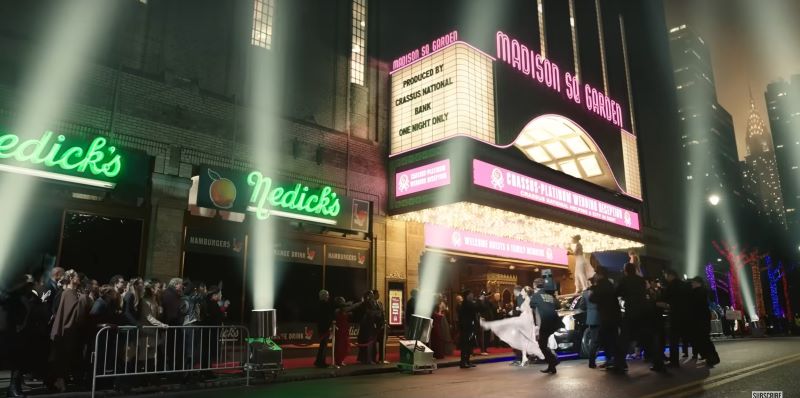
Movie festivals in the autumn lost their prominence as Oscar launching pads in recent years, but this cycle are working hard to again be harbingers of awards.
“For 14 years between 2007 and 2020, from ‘No Country for Old Men’ to ‘Nomadland,’ the Oscar Best Picture winner screened (and in all but three cases premiered) at the Venice International Film Festival, the Telluride Film Festival or the Toronto International Film Festival,” writes Steve Pond in TheWrap.
“In many cases, [Oscar winners were] in more than one of those festivals,” the article continues: “And for most of that time, the majority of Best Picture nominees came out of the Venice-Telluride-Toronto axis. But then things changed. The 2021 winner, for the first time ever, was a Sundance movie, ‘CODA.’”
“And last year,” writes Pond, Oscar Best Picture winner “‘Oppenheimer’ went straight to theaters without any film-festival launching pad.”
This cycle, film fests are aggressive with the Venice (Italy) International Film Festival presenting the world premiere of Warner Bros. remake “Beetlejuice Beetlejuice” a few days ago on Aug. 28, for example. The other leading fest platforms are the Toronto International Film Festival and Telluride (in Colorado).
Toronto scheduled Francis Ford Coppola’s epic “Megalopolis” on Sept. 9 (image above is from the “”Megalopolis” film). Coppola’s epic first screened at the Cannes International Film Festival in May 16. Toronto and Telluride are still assembling their film slates. Under those Big Three fests in autumn, there are a plethora of second tier film fests (Sundance is a major fest but its Spring date puts it out of awards season).

Film festivals are a business, since none will survive with light public attendance, so it’s vital to have reputations as harbingers of Oscars. Being awards-season bellwethers is an economic and reputational necessity for the big autumn events. These lead into the November-to-February film awards season, capped by the Oscars telecast on ABC Television that is scheduled for March 2, 2025.
Festivals-as-harbingers of awards kudos worked well when a streak of arty films won the Best Picture Oscar, such as 2009’s “The Hurt Locker” (anemic domestic boxoffice of $17 million) and 2021’s “Nomadland” (just $3.7m in domestic boxoffice). Big commercial films such as comic book adaptations skip arty film fests because such films are all glitz with little cinema art.
Plus, their distributors don’t want their glossy productions that cost $200 million to make to be embarrassed by some dreary indie film made on a shoe-string budget (for example, “Nomadland” cost just $5 million to produce). The data is from boxoffice website The Numbers.
Being a harbinger for Oscars and other movie awards is not a static endeavor. A lot dependents on trends in awards: will Academy Awards voters go full indie picking arty, out-of-the-maintstream films such as weird South Korean drama “Parasite”? Or will they veer to grand commercial films such as “Oppenheimer,” “Titanic” and epic “Lord of the Rings: Return of the King.”
If arty, festivals are sitting pretty because they already book esoteric independent fare. If mainstream, they’d have to go outside their normal zone. That’s doable with special screenings outside of competition for major-studio fare that is commercial in orientation and doesn’t fit in an arty in-competition lineup.
Hollywood always gives fest platforms a good look because they attract the press, making them ready-made publicity platforms (films can screen “out of competition,” which sidesteps what would be embarrassing awards snubs).
The selection of film fests in the autumn-winter award seasons is limited because most are scheduled in warmer spring and summer, which puts them outside the awards-season cycle. For example, the Cannes fest is prestigious, but its May date is not in the awards-season conversation.
Leave a Reply